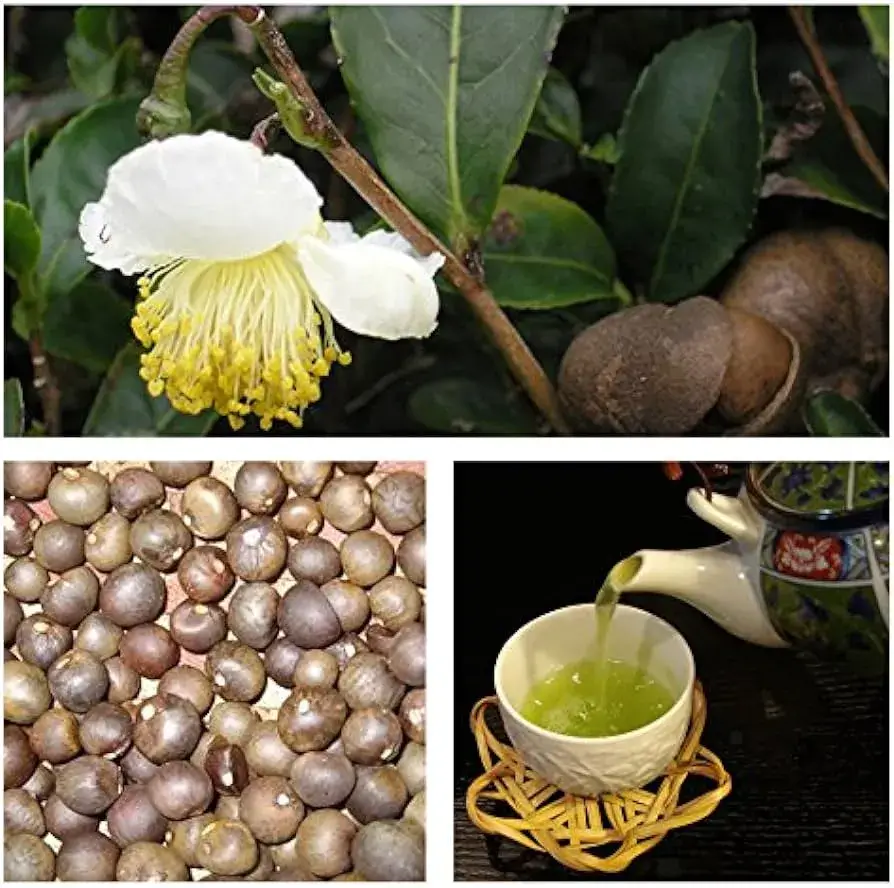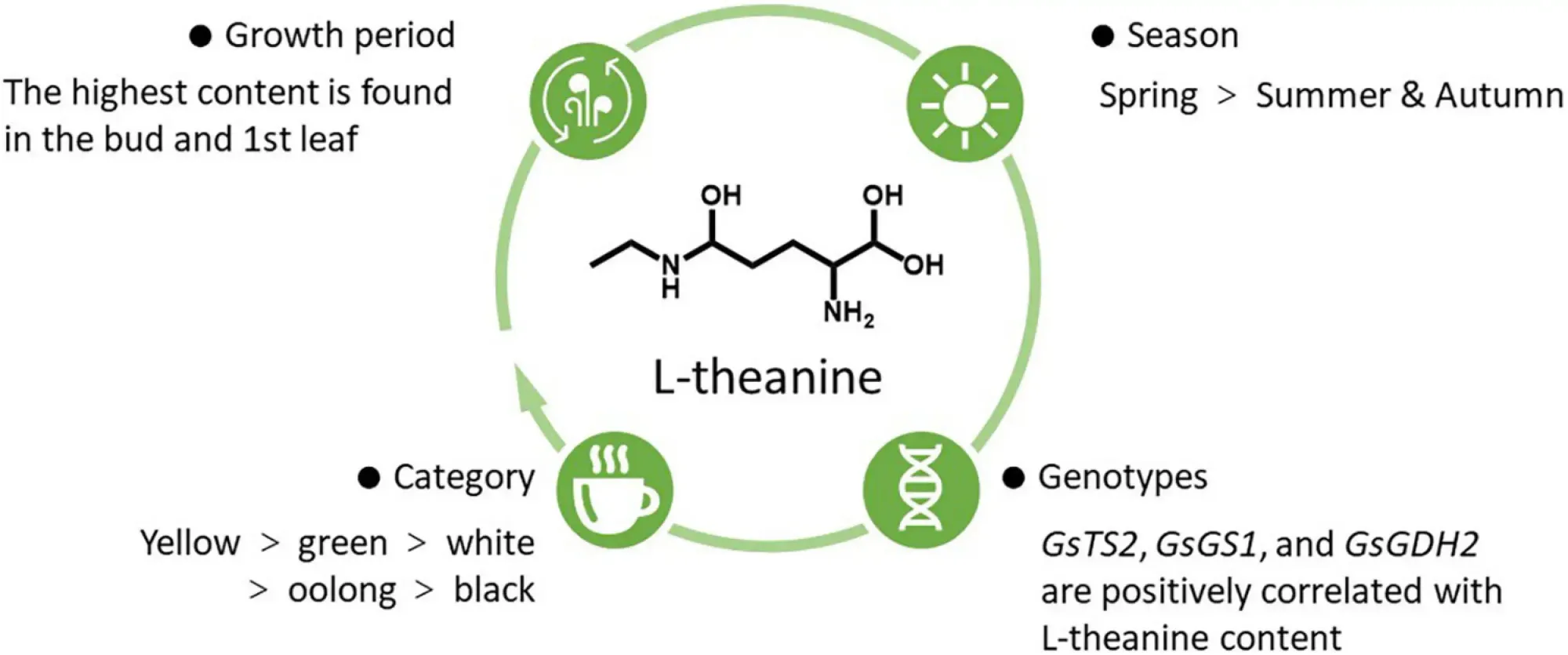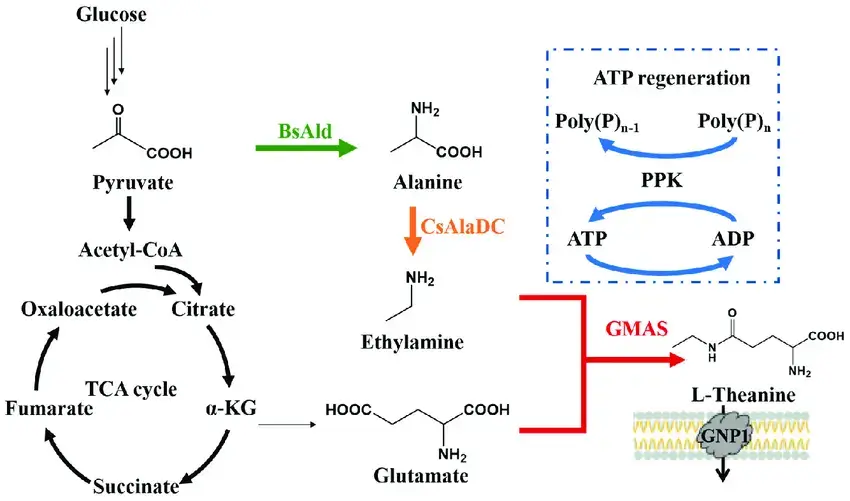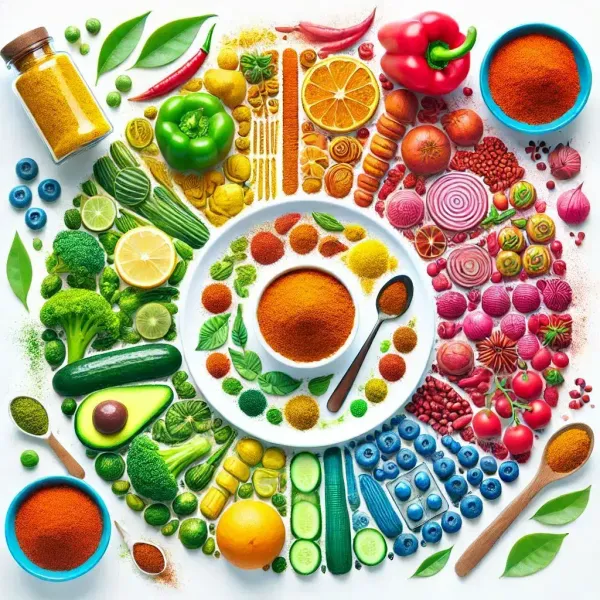L-Theanine Facts


L-Theanine: Nature's Calming Amino Acid
L-Theanine is a unique amino acid found primarily in tea leaves. It's renowned for its calming effects and potential health benefits. Let's explore this fascinating compound, from its origins to its uses.
What is L-Theanine?
L-Theanine is an amino acid analogue of glutamate and glutamine. It was first discovered in green tea leaves in 1949 and isolated from gyokuro leaves in 1950. This compound makes up about 1-2% of the dry weight of tea leaves.
Cultivation of Tea Plants for L-Theanine
Tea plants (Camellia sinensis) are the primary source of L-Theanine. Here are some key cultivation facts:
1. Tea plants thrive in tropical and subtropical climates.
2. They prefer well-drained, acidic soil with a pH between 5.5 and 6.5.
3. Optimal growing temperatures range from 18°C to 28°C (64°F to 82°F).
4. Tea plants require 400 to 1400 mm of annual rainfall.
Seed Stage
Tea seeds are typically round to slightly oblong, about 1-1.5 cm in diameter. They have a hard, brown outer shell with a small "eye" on one end.
Germination Stage
After soaking for 24-48 hours and being kept in warm, moist conditions:
1. The seed cracks open
2. A white root emerges, growing to about an inch long
3. A green shoot develops from the cracked seed
Seedling Stage
- Young seedlings are about 3-4 inches tall with a couple of developed leaves
- They are typically kept in small containers or seedling trays
- Seedlings require high humidity and indirect light
Young Plant Stage
- Plants are transferred to 6-inch pots when they outgrow their initial containers
- They develop more leaves and begin to form a branching structure
- At this stage, they can tolerate more direct sunlight
Mature Plant
- Camellia sinensis grows into an evergreen shrub or small tree
- Height ranges from 6 to 15 feet tall
- Leaves are dark green, glossy, and elliptical to lanceolate in shape, 2-6 inches long
- White or pink flowers appear in fall or early winter, 1-1.5 inches in diameter
- Mature plants can be used for tea production, typically when they are about 4 years old
Tea plants can be grown as landscape shrubs, hedges, or even in containers. They prefer well-draining soil and regular watering, and can be pruned to maintain desired shape and size.
Interestingly, deliberately shading tea plants from direct sunlight increases L-Theanine content. This technique is used in the production of matcha and gyokuro green teas.
Processing Tea Leaves for L-Theanine

The processing of tea leaves significantly affects L-Theanine content. Here's what you need to know:
1. Freshly harvested tea leaves contain the highest levels of L-Theanine.
2. Drying is a crucial step in preserving L-Theanine content.
3. Freeze-drying, air-drying, and oven-drying at 40°C maintain L-Theanine levels well.
4. High-temperature drying (80°C) significantly reduces L-Theanine content.
L-Theanine Extraction and Synthesis
L-Theanine can be obtained through:
1. Natural extraction from tea leaves
2. Chemical synthesis
3. Microbial fermentation (emerging method)
L-theanine can be chemically synthesized through several methods, with the most common approach involving the reaction between L-glutamic acid or its derivatives and ethylamine. Here are the key aspects of the chemical synthesis of L-theanine:
Chemical Synthesis Starting Materials
The primary starting materials for L-theanine synthesis are:
1. L-glutamic acid or its derivatives (e.g., L-pyrrolidonecarboxylic acid)
2. Ethylamine
Synthesis Methods

1. L-Glutamic Acid Method
This method involves the following steps:
1. L-glutamic acid is reacted with copper salt to form a chelate.
2. The chelate undergoes esterification with methanol.
3. The resulting compound is reacted with ethylamine aqueous solution.
4. A decoppering reagent is added to remove copper.
5. The solvent is removed to obtain crude L-theanine.
2. L-Pyrrolidonecarboxylic Acid (L-PCA) Method
This improved synthesis method includes:
1. L-PCA is reacted with anhydrous ethylamine.
2. The reaction occurs under specific conditions:
- Temperature: 30-59°C
- Pressure: 0.4-5.9 MPa
- Presence of an antioxidant
- Air elimination using dry ethylamine
Reaction Conditions
- The reaction is typically carried out in a closed reactor.
- Dry ethylamine gas is used to eliminate air from the reaction vessel.
- Medium pressure conditions are employed.
- Antioxidants are added to improve yield and product quality.
Advantages of Chemical Synthesis
1. Scalability: Suitable for industrial-scale production.
2. Cost-effectiveness: More economical than extraction from tea leaves.
3. Purity control: Allows for the production of high-purity L-theanine.
Challenges
1. Use of toxic and flammable ethylamine, which increases production costs and safety concerns.
2. Potential formation of unwanted by-products or isomers.
3. Need for careful control of reaction conditions to ensure high yield and purity.
Recent Developments
Researchers are exploring alternative methods to address the challenges associated with chemical synthesis:
1. Enzymatic synthesis using various enzymes like γ-glutamyltranspeptidase or glutamine synthetase.
2. Microbial fermentation methods to produce L-theanine without the need for ethylamine.
3. Cell-free protein synthesis systems for more environmentally friendly production.
These advancements aim to improve the safety, efficiency, and sustainability of L-theanine production compared to traditional chemical synthesis methods.
Benefits and Uses of L-Theanine
L-Theanine offers several potential health benefits:
1. Stress Reduction: It may help lower stress and anxiety levels.
2. Improved Sleep: L-Theanine could enhance sleep quality.
3. Cognitive Function: Some studies suggest it may improve focus and attention.
4. Blood Pressure Regulation: It might help maintain healthy blood pressure levels.
How to Use L-Theanine
You can consume L-Theanine through:
1. Drinking green tea, particularly shade-grown varieties like matcha.
2. Taking L-Theanine supplements.
3. Consuming foods or beverages fortified with L-Theanine.
Safety and Regulation
L-Theanine is generally considered safe. In the United States, the FDA recognizes it as GRAS (Generally Recognized as Safe) and allows its use in dietary supplements up to 250 mg per serving. However, regulations vary by country, so it's always best to consult with a healthcare professional before starting any new supplement regimen.
L-Theanine, whether from a cup of green tea or a supplement, offers a natural way to promote relaxation without sedation. As research continues, we may discover even more benefits of this unique compound.



